How Will the Israel-Iran Conflict Unfold?
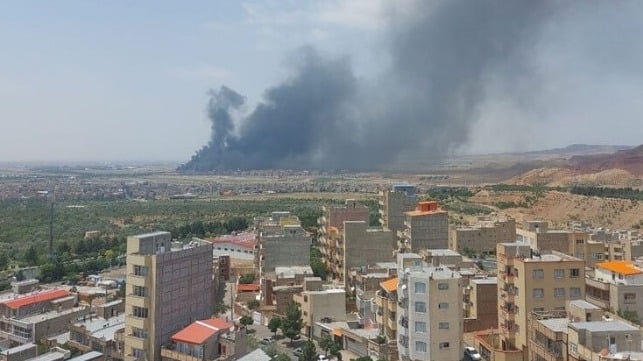
Israel has declared that its attacks on Iran early on the morning of June 13 are only the beginning of what has been planned as a three-week campaign. Iran retaliated initially with a
barrage of 100 drones, very few of which got through to Israel, with several intercepted over the Dead Sea. But subsequently seven missiles of a barrage of about 100 missiles penetrated
Israeli air defenses, causing damage in the greater Tel Aviv area, and a second wave caused at least three fatalities. It is not clear yet whether the limited size of the two Iranian missile salvos is a product of Israel’s strikes on the Iranian missile infrastructure, or are an Iranian attempt to conserve stocks. Iran had promised that its response to any Israel attack, which in advance it nicknamed Operation True Promise-3, would be devastating.
As reported earlier, as yet there does not appear to be any immediate disruption to shipping in the Gulf, and remarkably, Gulf airlines - whilst avoiding Iranian airspace and destinations - appear to be maintaining much of their schedules, albeit with delays due to diversions through safer airspace. Reports from ship monitoring companies carried in the Wall Street Journal suggest that a larger number than normal of vessels are in anchorages off Iran’s ports awaiting docking, but such numbers could have built up prior to the Israeli attack, possibly caused by the after-effects of the explosion at the Bandar Abbas commercial port. A pattern of activity is not yet apparent in satellite imagery of the Bandar Abbas roads, although a lot of ships appear to be under way.
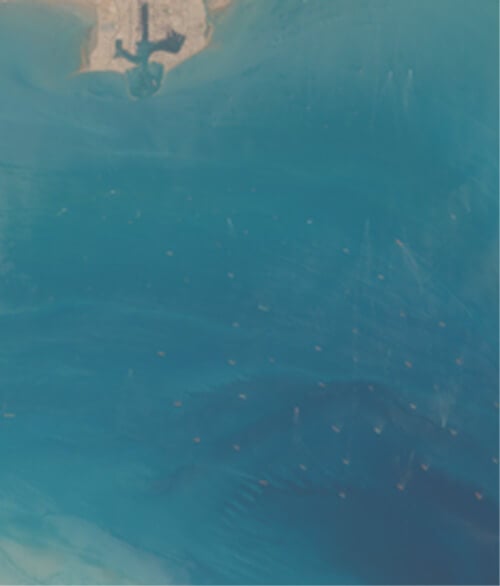
Bandar Abbas Anchorage, June 13 (Sentinel-2)
The naval dockyard has not emptied of ships.
Any Iranian attempt to close the Straits of Hormuz would be a very risky endeavor. Firstly, it would curtail Iran’s own oil exports, which are its primary source of finance. A blockade would quickly degenerate into open warfare. While the IRGC Navy (Nedsa) can make a nuisance of itself in times of peace, Iranian maritime capability, both that belonging to Nedsa and the antiquated regular navy (Nedaja), would rapidly take up positions on the seabed if they tangled with US or allied navies in open conflict. Moreover, a closure of the Straits of Hormuz would severely impact GCC states - and Iran at this juncture would not wish to make enemies of these countries, who at the moment are professing outrage about the Israeli attacks.
Likewise, attacks on infrastructure in GCC countries, or on US assets based in these countries, would force GCC countries into alignment with the United States, which in reality is the inclination of their leaders, but unspoken because of popular support in these GCC countries for the Palestinian cause.
Israel will undoubtedly aim further attacks at the IRGC’s 24 identified missile sites in the western half of the country, spread from north to south. All feature underground storage bunkers, from which both drone and missile mobile launchers can be driven out, ready to go into action within minutes. The site at Kermanshah Konesh Canyon has at least 60 such tunnel bunkers and the Kermanshah missile infrastructure appears to have been an early Israeli target, with secondary explosions visible in the Israeli attack video released.
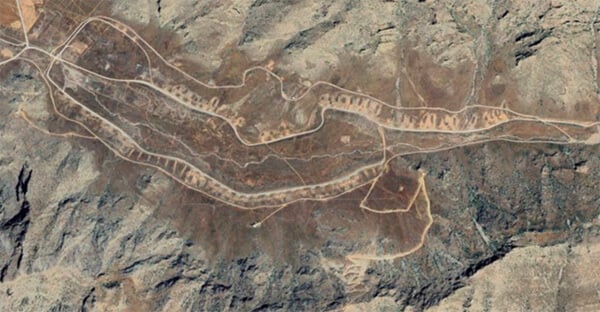
More than 50 underground bunkers visible in the Kermanshah Konesh Canyon missile complex (Google Earth, June 6, 2024)
For Israel to be safe from Iranian counter-attacks, all the sites listed below as well as a number of coastal tunnel complexes housing Nedsa missile boats. will eventually need to be neutralized or destroyed, unless a durable political settlement can be achieved. Those sites armed with the latest Haj Qassem medium-range solid fuel missile will be a particular priority, as these missiles have a separating warhead which appears to be independently maneuverable and equipped with a passive targeting system.
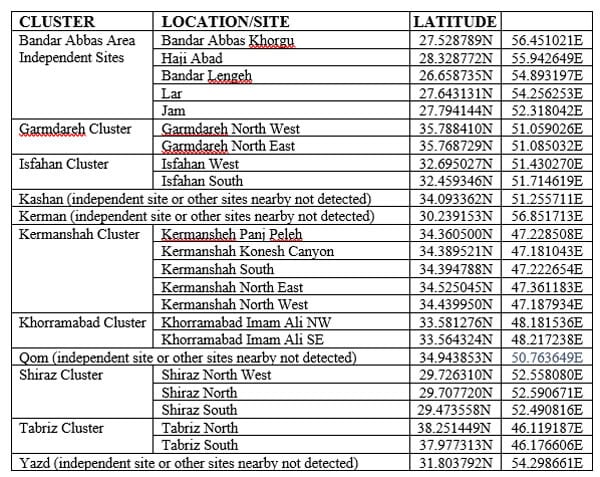
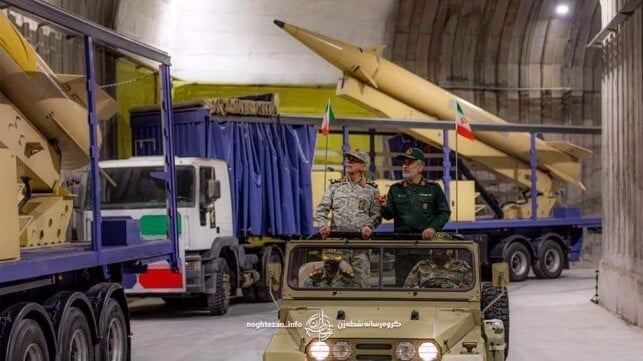
The late Maj Gen Mohammad Bagheri and Brigadier Amir Ali Hajizadeh tour a ‘missile megacity’, March 25 (Press TV)
Israel has couched its attack as a last-minute unavoidable step needed to prevent Iran from acquiring nuclear weapons, and hence Iran’s nuclear facilities have featured prominently in the
list of targets attacked. But also important to Israel will be curbing this enduring Iranian ballistic missile threat, as well as ending Iran’s strategy of regional expansionism which has plagued the region for decades. Israel’s aims in this regard are shared with the United States. Attacking the Iranian leadership will help attain this objective, as well as paralyzing Iranian counter-attack planning, weakening the hardliners who dominate the IRGC. Israel may also choose to hold back attacks on the regular armed forces, which are more closely aligned with the reformist cause headed up by President Masoud Pezeshkian. The retention of most of the Nedaja fleet dockside in Bandar Abbas Naval Harbor in recent days could be interpreted as a desire not to present a provocation; by not attacking the regular armed forces, Israel would leave them with the strength to take on the hardliners in a post-attack struggle for power.
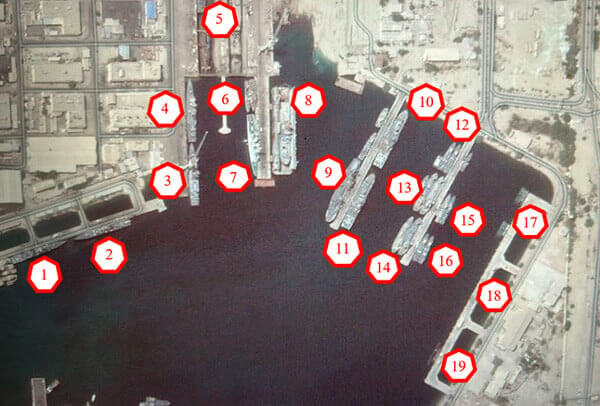
Bandar Abbas Naval Base June 2 ((Sentinel-2/CJRC, subject to imagery resolution limitations)
1. Moudge Class frigate
2. Alvand Class frigate
3. Moudge Class frigate
4. Alvand Class frigate
5. Kilo Class submarine in dry dock, with probable second Kilo under cover in dry dock alongside
6. 2 x Sina or Kaman Class fast attack craft
7. Intelligence collector IRINS Zagros (H313)
8. Hengam Class landing ship IRINS Larak (L512) in floating dry dock
9. Bandar Abbas Class logistics vessel IRINS Bushehr (K442)
10 and 11. Hengam Class landing ships IRINS Tonb (L513) and Lavan (L514)
12. 2 x Hendijan Class auxiliaries
13 and 14. Total of 4 x Delvar Class auxiliaries
15. 2 x Kaman or Sina Class fast attack craft
16. Probably 2 x Hendijan Class auxiliaries
17. Ghadir and Nahang Class midget submarines
18. Kilo Class submarine missing from its normal berth
19. Probable Fateh Class medium submarine
Bandar Abbas Naval Base outer harbor: Forward base ship IRINS Makran (K441)
The opinions expressed herein are the author's and not necessarily those of The Maritime Executive.
